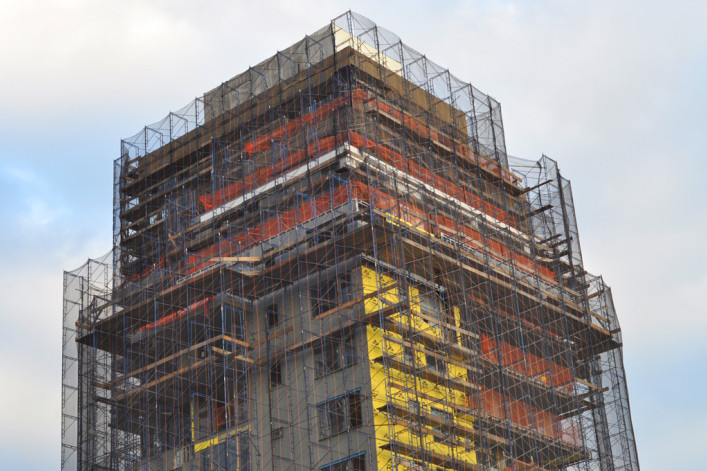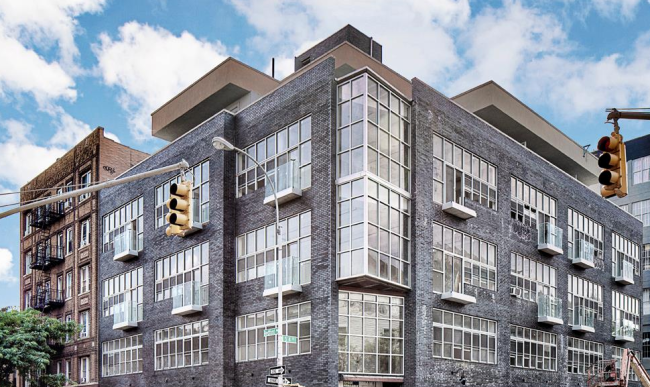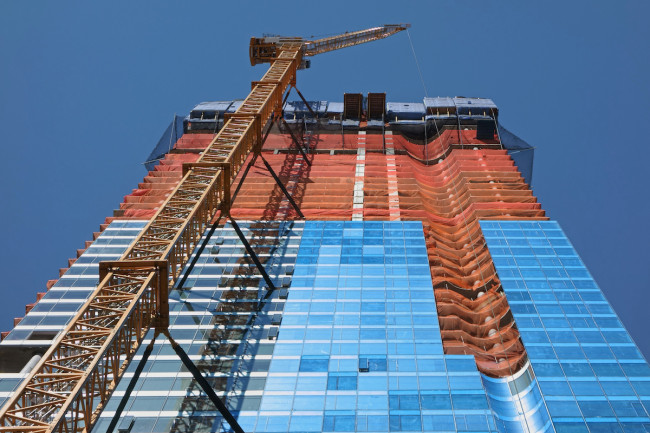Three tricks to make sure a new development rental is legit (and not a "death trap")

Flickr/Jason Perrse
In a rental market full of rundown roommate shares and sloppily renovated fixer-uppers, a brand-new building can sound like a breath of fresh air. (Brand new appliances! The latest amenities! No wear and tear from former residents!)
But while buyers in new developments have the time and financial resources to bring through engineers and architects to inspect a place before shelling out a down payment (though they should come to the table with lots of questions ready), what's a renter to do to make sure the new building they're considering is built to last, and not an overpriced, shoddily constructed, so-called "death trap" likes ones that have been in the news as of late?
While there's no way to guarantee your apartment won't spring a leak—or worse—the second you move in, there are some steps you can take to sniff out a less-than-legit building, even in the lightning-fast rental process:
DO YOUR INTERNET SLEUTHING
We're generally big advocates of Googling before you move, but this is doubly true if you're moving into a brand new (or still-under-construction building.) "Landlords might not want to rent to you if you insist on an inspection, but there's a lot more publicity out there about buildings than there used to be" says Sam Himmelstein, a landlord-tenant attorney with Himmelstein, McConnell, Gribben, Donoghue, & Joseph. (FYI, the firm is a Brick sponsor.) "The Department of Buildings and HPD are probably the best resources." Indeed, if you plug your address into the form on HPD's site, you can bring up information like your building's complaint history and tenant harassment report. There's a similar form on the Department of Buildings homepage that's perhaps more helpful for new development, as you can see things like the status of the Certificate of Occupancy (a building absolutely has to have one to be legitimate), and if they've received violations for performing construction work without permits.
Here, you can also find out the name of the building's owner or developer, which will allow you to dig even deeper. "There are many people who have built a lot of buildings but sell them off as soon as the work is finished," explains Brian Weiss, a partner at Triumph Property Group. "Some owners build to own, and those buildings tend to be better quality." A developer with an established track record (and no tabloid articles in their Google results that detail crumbling buildings and poorly-treated tenants) is likely a safer bet than someone who's brand new to the New York market.
KEEP AN EYE ON THE DETAILS
One upside to searching for a new development rental as opposed to a condo: apartments won't be on the market til the building is ready for residents, so you can visit in-person, and not base your decision solely on photos or renderings. And in addition to the usual details you'd pay attention to when touring a rental building (how much noise can you hear from the street? is the water pressure decent?), there are other telltale signs that can indicate quite a bit about how much care the owners are putting into the property.
"With better buildings and developers, the details will be handled right," says Sha Dinour, the president of Triumph. "Things like if the tiles are put in evenly, if all the knobs on the cabinets line up—the better builders really care more about finishes and what the end product is going to look like. You can see the workmanship."
ModernSpaces co-founder Eric Benaim concurs: "When you're walking into the unit, look at the little things. For instance, the way the baseboard has been installed—if they aren't level, they weren't installed right. And look up at the ceiling as well as the corners where the windows are to make sure there are no water stains"—that would indicate leaking pipes or a poorly insulated building.
Also keep an eye on the rest of the building. "Yes, there might be some contruction debris and action still around, but is everything secured, is it clean," Benaim asks. "If the common areas are clean and the owners have paid attention to 'curb appeal,' it shows you how the building's being maintained."
GO STRAIGHT TO THE SOURCE
Even in a new development, it can sometimes be possible to get useful intel from the neighbors. "There may already be people in the building, even if it's new," says Benaim. If you run across any renters while you're touring the place, don't be afraid to ask about their experiences in the building thus far. (NB: This is a smart idea even in buildings with a more established track record.)
Failing that, sniff around to see if the building or the landlord has a Yelp page (you'd be surprised how many do), and if you find any articles about the project on sites like StreetEasy or Curbed, dive headfirst into the comments section for intel. It's always wise to take thse with a grain of salt—"Whoever went on Yelp just to say that they love their landlord?" as Benaim puts it—but if there's a critical mass of complaints floating around about the building's owners or the building itself? Renter beware.
You Might Also Like

























